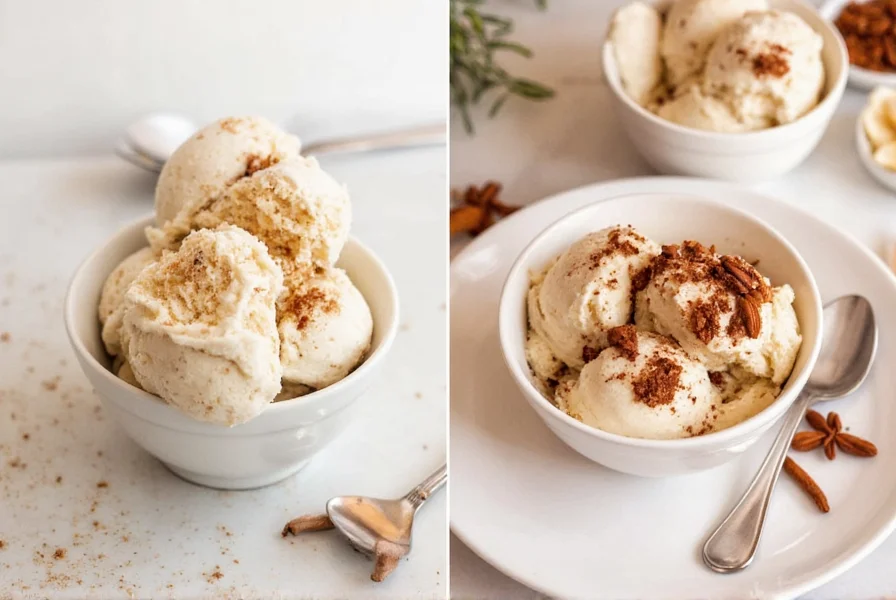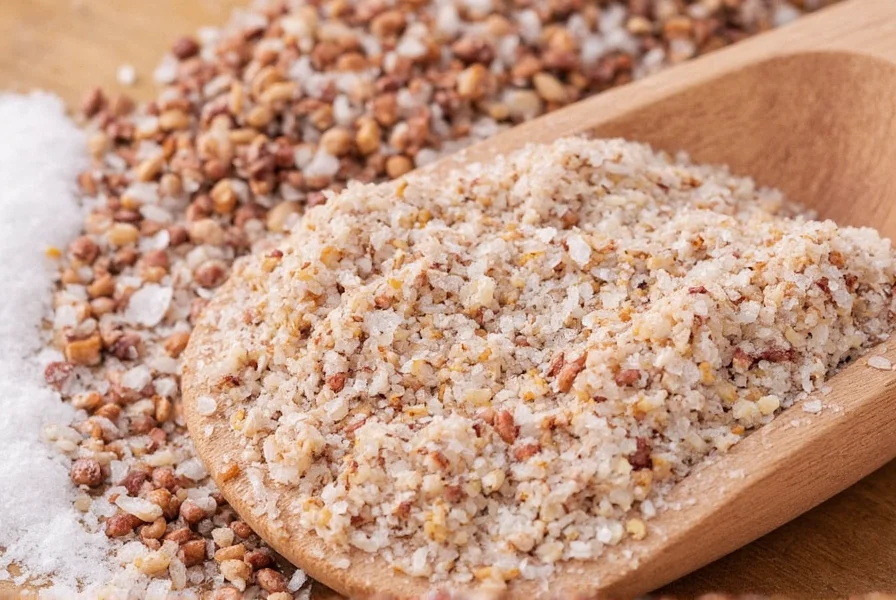If you've ever wondered why your homemade pasta never tastes quite like the one from that Italian bistro down the street, or why restaurant chefs make everything look so effortless while your chicken ends up tasting flat... it might just come down to salt. Not all salt is created equal — and this humble mineral is arguably the most powerful seasoning tool in any kitchen. Welcome to the ultimate guide to salt seasoning!
Salt is far more than just a seasoning — it's a culinary cornerstone. From enhancing flavor to transforming textures, mastering the art of salt can elevate your cooking from good to unforgettable.
Whether you're reaching for kosher salt to season your roast, or dusting a caramel tart with fleur de sel for contrast, remember this: salt is your secret weapon. Don't shy away from it — embrace its power, experiment with different varieties, and let your palate guide you.
So go ahead, sprinkle boldly. Your next dish could be legendary.
Table of Contents
- What Is Salt Seasoning, Really?
- Why Salt Matters More Than You Think
- The Salty Spectrum: Types of Salt and When to Use Them
- Pro Tips for Using Salt Like a Pro
- Buying Guide: Choosing the Right Salt for Your Kitchen
- Frequently Asked Questions
- Final Thoughts
What Is Salt Seasoning, Really?
Salt isn't just that white stuff you sprinkle over fries. In culinary terms, salt seasoning refers to the various forms of sodium chloride (NaCl) and other mineral-rich salts used to enhance flavor, preserve food, and even alter texture.
In its purest form, table salt is mined from ancient salt deposits or extracted from evaporated seawater. But depending on where and how it's processed, salt can take many shapes, textures, and flavors — each with its own unique use case in the kitchen.
Why Salt Matters More Than You Think
Salt does more than just add saltiness. It enhances sweetness, reduces bitterness, and balances sourness. Ever tasted a chocolate chip cookie without salt? Flat. Bland. Sad.
Here's what salt actually does:
- Enhances flavor: Brings out natural aromas in food
- Controls fermentation: Essential in bread baking and curing meats
- Improves texture: Helps break down proteins in meat, creating tender results
- Preserves freshness: Has been used for centuries to cure fish, meats, and vegetables
The Salty Spectrum: Types of Salt and When to Use Them
Let's dive into the briny world of salt varieties — their textures, flavors, and ideal uses.
| Type | Texture | Flavor | Best For |
|---|---|---|---|
| Table Salt | Fine, uniform crystals | Clean, sharp saltiness | Cooking, baking, everyday use |
| Kosher Salt | Rougher, flaky crystals | Mild and clean | Seasoning meats, general cooking |
| Sea Salt | Crunchy to fine grains | Mineral-forward, slightly sweet | Finishing dishes, brining, baking |
| Himalayan Pink Salt | Coarse, pinkish crystals | Earthy, mild | Grinding at the table, spa use |
| Fleur de Sel | Damp, delicate flakes | Complex, oceanic | Finishing gourmet dishes |
| Smoked Salt | Varies by base salt | Smoky, woody notes | Meat rubs, grilled veggies |
| Celtic Sea Salt | Damp, coarse grains | Briny, rich minerals | Seafood, butter, artisan cooking |
Pro Tips for Using Salt Like a Pro
Now that we've got the basics covered, here are some pro-level hacks to level up your salty game:
- Don't be afraid to salt early. Especially when cooking meats or soups — salt needs time to penetrate and work its magic.
- Use coarse salt for grilling or roasting. Kosher or sea salt holds up well under heat and gives a nice crust.
- Add finishing salt right before serving. Delicate salts like fleur de sel or smoked salt lose their complexity when cooked too long.
- Measure with your fingers. Professional chefs often season by feel — try pinching salt instead of measuring spoons for better control.
- Create salt blends. Mix sea salt with citrus zest, garlic powder, or chili flakes for an instant flavor boost.
- Balance flavors. If something is bitter (like eggplant or kale), a pinch of salt can smooth things out instantly.
- Use salt as a palette cleanser. Between tastings, a bit of salt resets your tongue and makes tasting more accurate.
Buying Guide: Choosing the Right Salt for Your Kitchen
With so many options, choosing the right salt can feel overwhelming. Let's break it down by product, price, and performance.
Top Salt Picks for Every Need
Morton Coarse Kosher Salt
This classic staple is beloved by home cooks and pros alike. Its flaky structure makes it perfect for sprinkling by hand, and it dissolves evenly without leaving a harsh taste.
- Features: Affordable, consistent texture
- Best For: Everyday cooking, seasoning meats
- Price: ~$3–$5 per container
- Who Should Buy: Beginners and regular home cooks
Maldon Sea Salt Flakes

A cult favorite among chefs, Maldon offers crisp, crunchy flakes with a mild salinity. Perfect for topping salads, pastries, and grilled steaks.
- Features: Light, flaky texture; premium finish
- Best For: Finishing dishes
- Price: ~$10–$15 per jar
- Who Should Buy: Home gourmands, food photographers, special occasion cooks
Redmond Real Salt
Natural, unrefined salt harvested from ancient sea beds. Rich in trace minerals and comes in fine or coarse grind.
- Features: Unprocessed, earthy flavor
- Best For: Health-focused cooks, fermenters, bakers
- Price: ~$8–$12 per bag
- Who Should Buy: Naturalists, DIY fermenters, holistic eaters
Himalayan Chef's Craft Salt
Bright pink crystal salt great for adding color and a slight mineral note. Ideal for spice racks and show kitchens.
- Features: Aesthetic appeal, mild flavor
- Best For: Table grinding, decorative purposes
- Price: ~$7–$10 per jar
- Who Should Buy: Home entertainers, gift buyers, wellness influencers
Frequently Asked Questions About Salt Seasoning
How much salt should I use when cooking?
The right amount varies by dish and personal preference, but a good rule is to season in layers. Add small amounts throughout cooking rather than all at once. For most dishes, start with 1/4 teaspoon per serving and adjust to taste. Remember, it's easier to add more salt than to fix an over-salted dish.
Why do chefs say to "season to taste" instead of giving exact measurements?
Salt needs vary based on factors like the natural saltiness of ingredients, cooking method, and personal preference. What tastes perfect to one person might be too salty or not salty enough for another. Chefs emphasize tasting and adjusting because salt is highly personal and context-dependent in cooking.
What's the difference between kosher salt and table salt?
Kosher salt has larger, rougher crystals and less sodium by volume than table salt. It's easier to pinch and control when seasoning, dissolves well, and has a cleaner taste without additives. Table salt is finer, often contains anti-caking agents and iodine, and is more concentrated - you need less of it to achieve the same saltiness.
When should I use finishing salts versus cooking salts?
Use coarse salts like kosher or sea salt during cooking for even distribution and penetration. Save delicate finishing salts like fleur de sel or smoked salt for the end of cooking or just before serving - they provide texture contrast and preserve their nuanced flavors that would be lost with prolonged heat exposure.
Can I substitute one type of salt for another in recipes?
Yes, but with caution. Different salts have varying crystal sizes and densities, so 1 teaspoon of table salt contains more sodium than 1 teaspoon of kosher salt. As a general rule: 1 tsp table salt = 1.5 tsp kosher salt = 2 tsp sea salt flakes. Always taste as you go when substituting.
Why does salt make food taste better?
Salt enhances flavor through several mechanisms: it suppresses bitterness, amplifies sweetness and umami, and helps release aromatic compounds in food. It also affects our perception of texture and can make other flavors more pronounced without necessarily making food taste "salty" when used properly.
Is sea salt really healthier than table salt?
From a nutritional standpoint, no. Both contain similar amounts of sodium chloride. Some sea salts contain trace minerals, but not in significant enough quantities to provide health benefits. The main differences are in texture, flavor profile, and processing - not nutritional value. The healthiest approach is to use any salt in moderation.
Final Thoughts

Salt is far more than just a seasoning — it's a culinary cornerstone. From enhancing flavor to transforming textures, mastering the art of salt can elevate your cooking from good to unforgettable.
Whether you're reaching for kosher salt to season your roast, or dusting a caramel tart with fleur de sel for contrast, remember this: salt is your secret weapon. Don't shy away from it — embrace its power, experiment with different varieties, and let your palate guide you.
So go ahead, sprinkle boldly. Your next dish could be legendary.










 浙公网安备
33010002000092号
浙公网安备
33010002000092号 浙B2-20120091-4
浙B2-20120091-4